Rob’s chosen model trains Colorado for the them of his new layout:
“Hi Al,
I still have all of my Farland Howe Layout but I have started a new one called the Colorado & North Western.
It has origins much closer to home and is N scale. I am going to model an area in and around Longmont, Colorado, USA.
It is intentionally very lightweight so I hope to take it to shows.
The layout comes apart into three sections held together by door hinges so it is easy to pull the pin and separate them.
There was a bean cannery here, a Gibson tractor factory, the local powerhouse for the city, and a cement plant that exists nearby. All of these require service from the railroad.
In the beginning, the Colorado and Southern laid tracks through and up into the mountains nearby. This lasted until 1910 or so when the Chicago Burlington & Quincy Railroad bought them.
The C&S continued to operate the mountain schedules for some time after the purchase.
Eventually, in the early 1970’s the Burlington was merged with the Northern forming the Burlington Northern. Then of the BN merged with the Santa Fe Railroad and became the BNSF as we know it today which still serves the area. They have a wye and a small yard here with several trains to and from the cement plant nearby daily.
I am working on the North End of the layout now and starting with the limestone mines that feed the cement plant with raw materials.
Most of the buildings and structures that make up the cement plant are already in place on the layout but the scenery has not been started there.
The cement plant builds and structures are mostly scratch built but some were kits like the silos.
I wanted to layout to be situated in the early 1950s or very late 1940’s so I could run steam when I wanted to.
This is the Burlington era of early Electromotive Division Diesels and the stainless steel-bodied passenger coaches of the California Zephyr Train that came through Denver and over the Rocky Mountains going to San Francisco. This was an exciting time to me. I road this train in 1964 and 1965, but it was well past the heyday then and did not have the glamour of the earlier times.
The video shows me using rock molds to face the limestone mine I am building. I think your readers might enjoy the video.
Thank you for all you do for the model train modeling world.
Rob – Farland Howe”
Jeanne’s also been in touch with this sage advice:
“Tips for old folks. Build your platform tall enough so it doesn’t kill your back.
If wiring under the platform make sure you have clearance to get under there. Consider putting platform on casters so it can move out to work on all sides.
We are 85 and 70 and wish we had paid more attention in the beginning….15 years ago.
Had no clue we would love railroading so much…
Jeanne”
I do love all your advice and tips. Perhaps the advice I like best is simply this: your layout can be whatever you want it to be.
And Larry is a good example of this:
“I am very much enjoying your daily emails, photos, videos, and resources.
I haven’t ordered any of your printed buildings yet, and when you see my attached photos, you will understand that I really don’t have room for more items.
I was given my first 027 Lionel set when I was 4 years old. I am now 65, and I still have it and many more trains and accessories since then.
By the time I was 10, I developed a deep love of Matchbox diecast vehicles, and from that point on, I have accumulated a collection of over 800 pieces in that collection as well.
So, my life project has been combining my Matchbox collection with my 027, HO, and N guage train collection and blending items not in the same scale, all within a 10′ x 12′ “train room.”
Obviously my layouts are not large or particularly intricate (The main N guage layout is 4′ x 6′), and there is virtually no “constructed scenery,” unlike so many of your amazing scenery layouts.
But, I am very proud of my many layers of hobby in quite a small space, and I want to encourage those who aren’t very “artsy” in scenery construction or don’t feel they have much space.
Why such a small space? My sweet wife doesn’t like a crowded house, so I have a crowded train room/train cave, and we are both very happy.
Perhaps my collection will expand into other areas over time, now that we are retired, but I always smile when I am in my room. Nothing in the real world can touch me there, and it doesn’t get much better than that.
Keep spreading joy with you emails, and thank you!
Larry from Florida”
That’s all for today folks.
A big thanks to Hall of Fame member, Rob, for sharing his model trains Colorado theme, and to Larry too.
Please do keep ’em coming.
And don’t forget the Beginner’s Guide is here if you want to get going on your own layout.
Best
Al


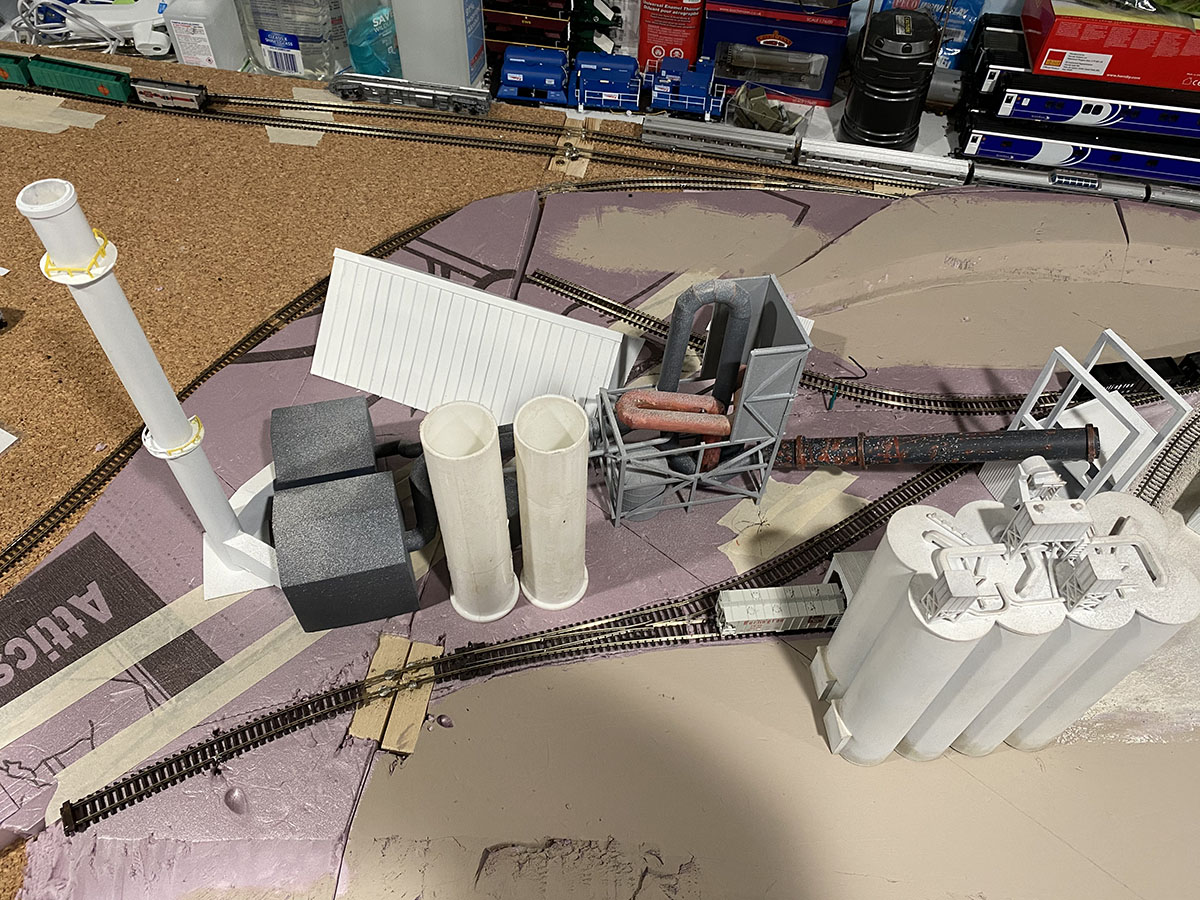
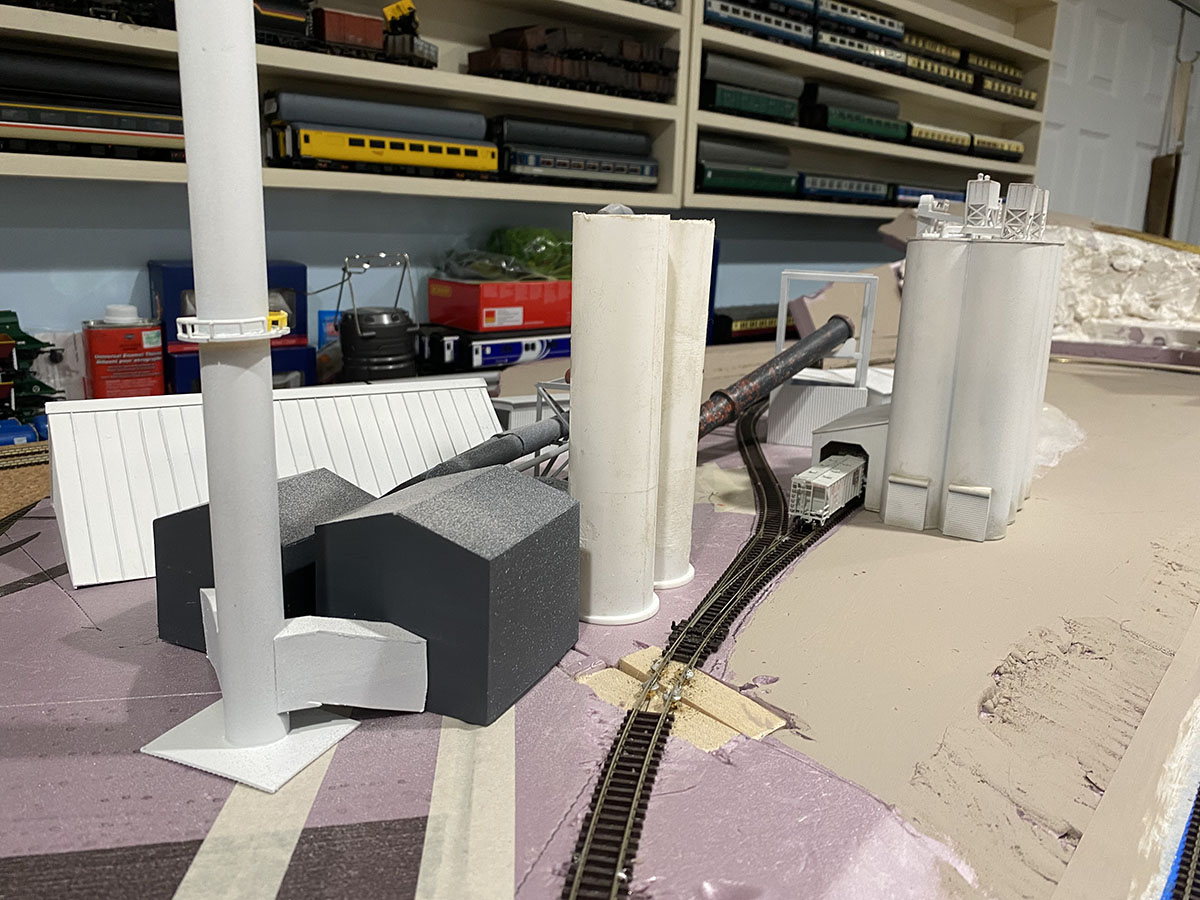
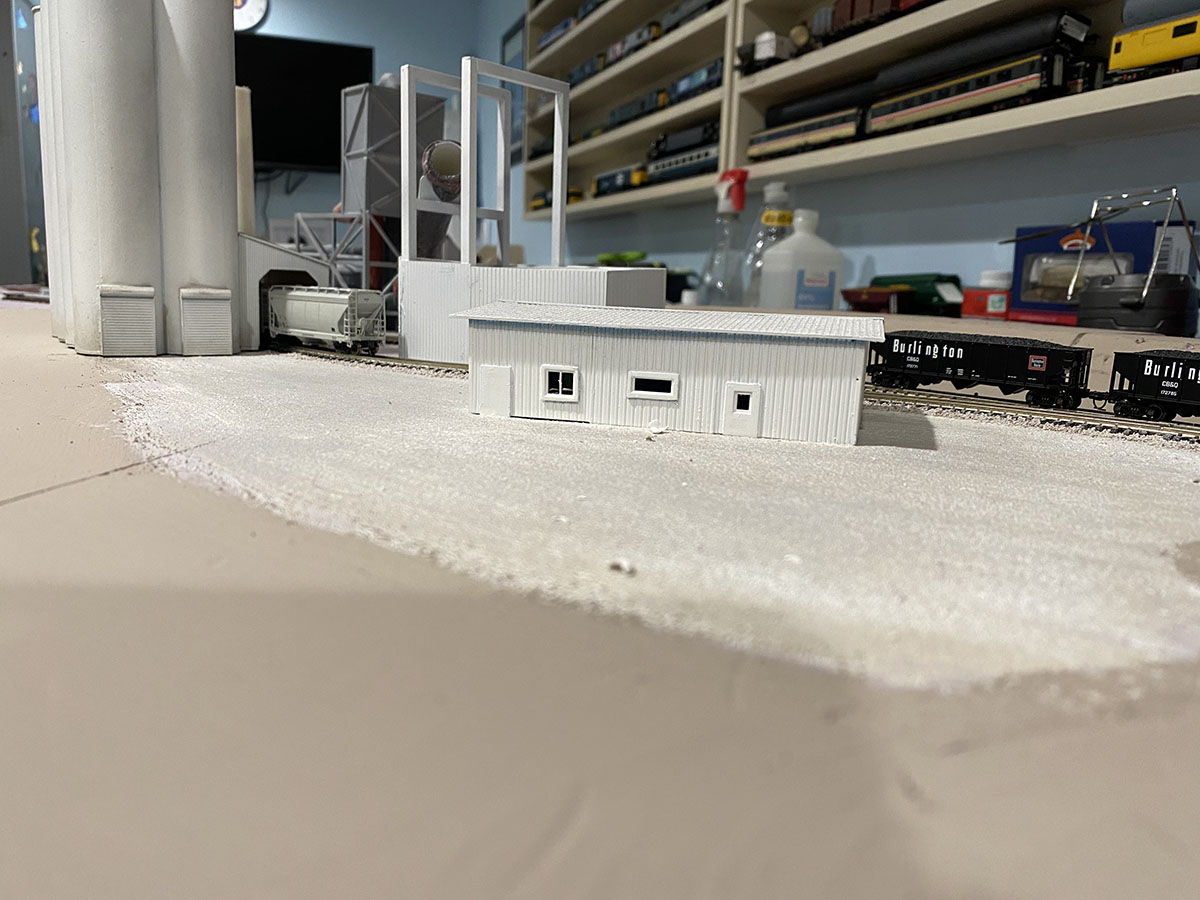
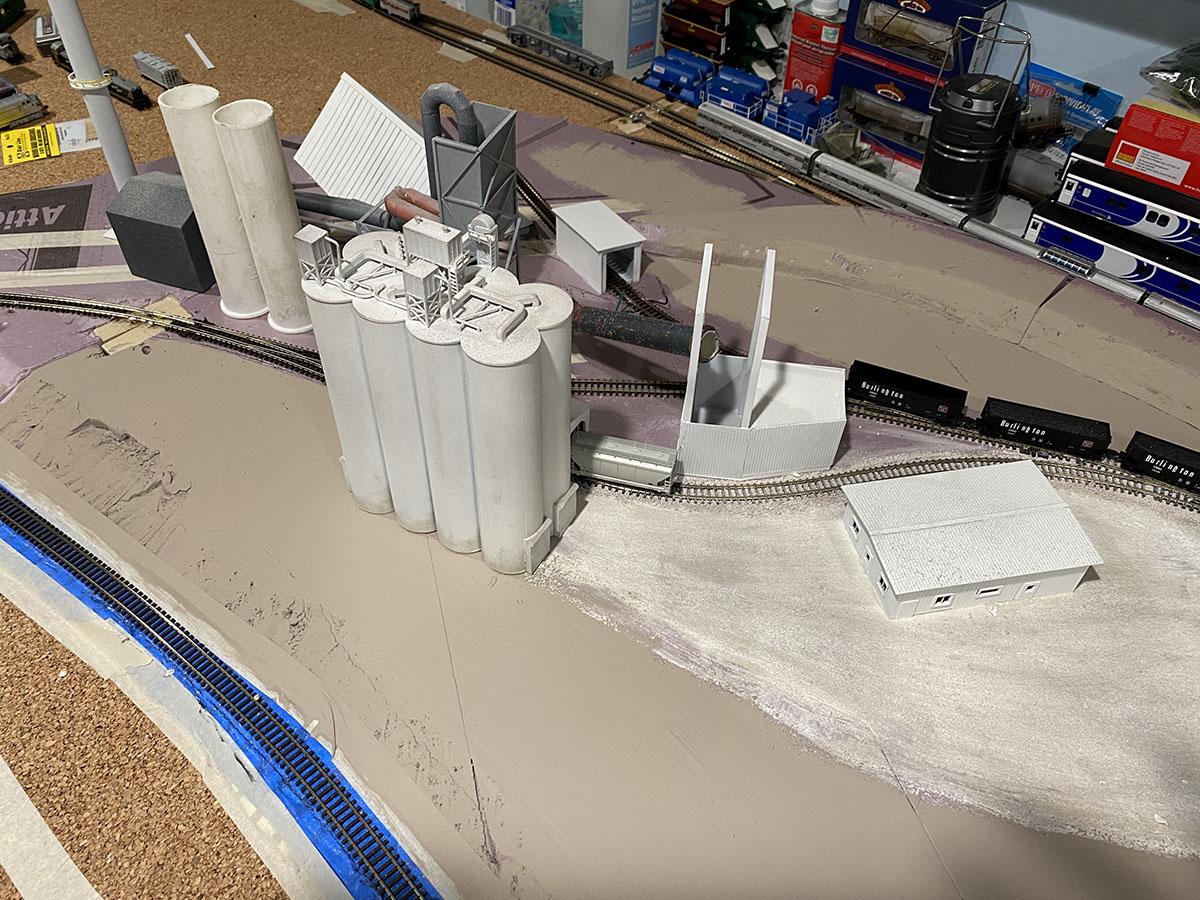
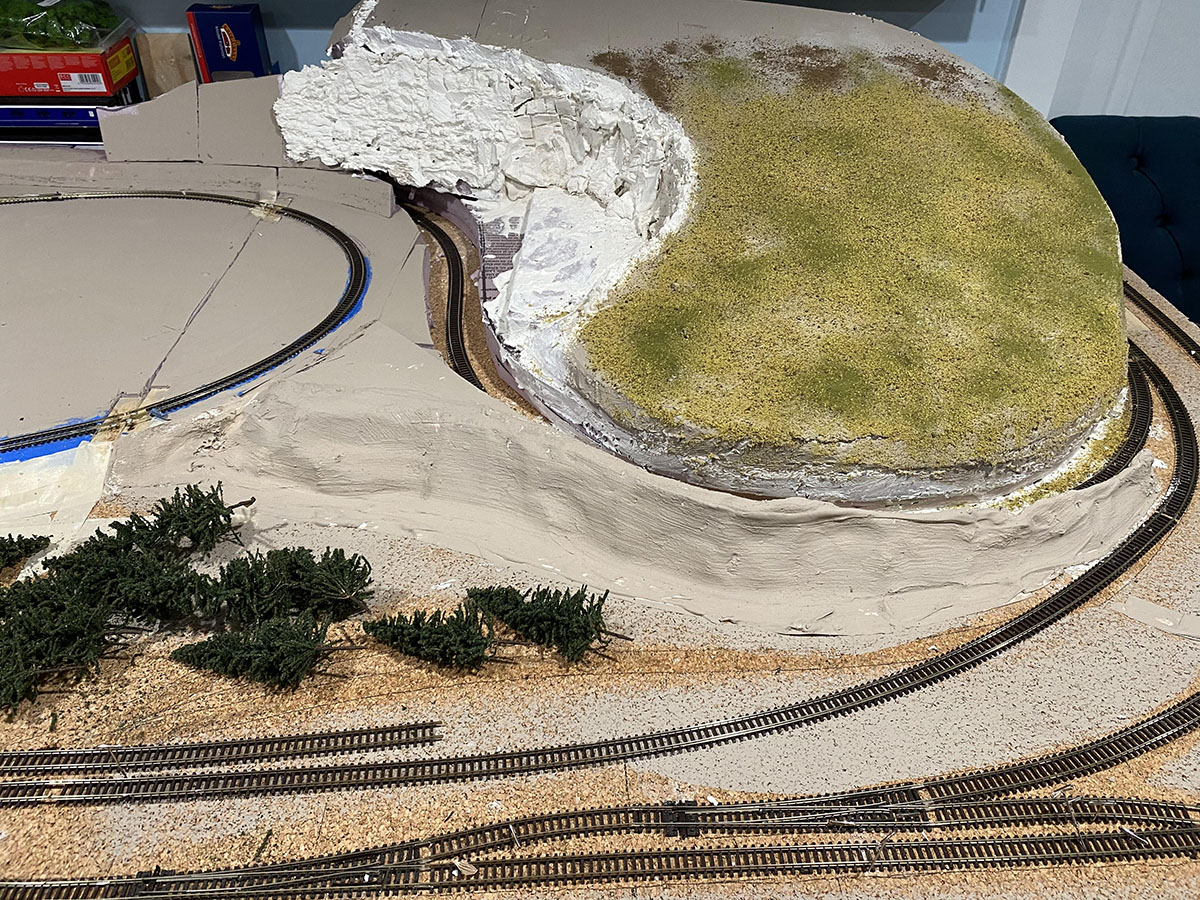
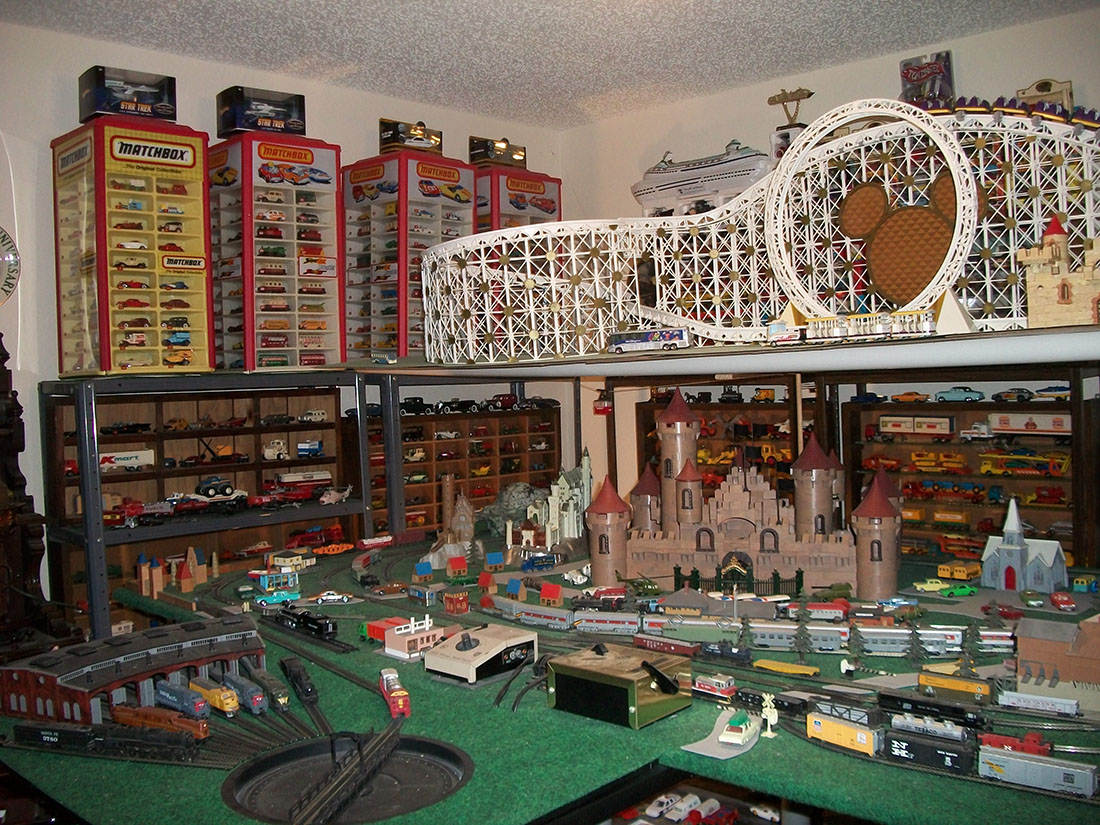
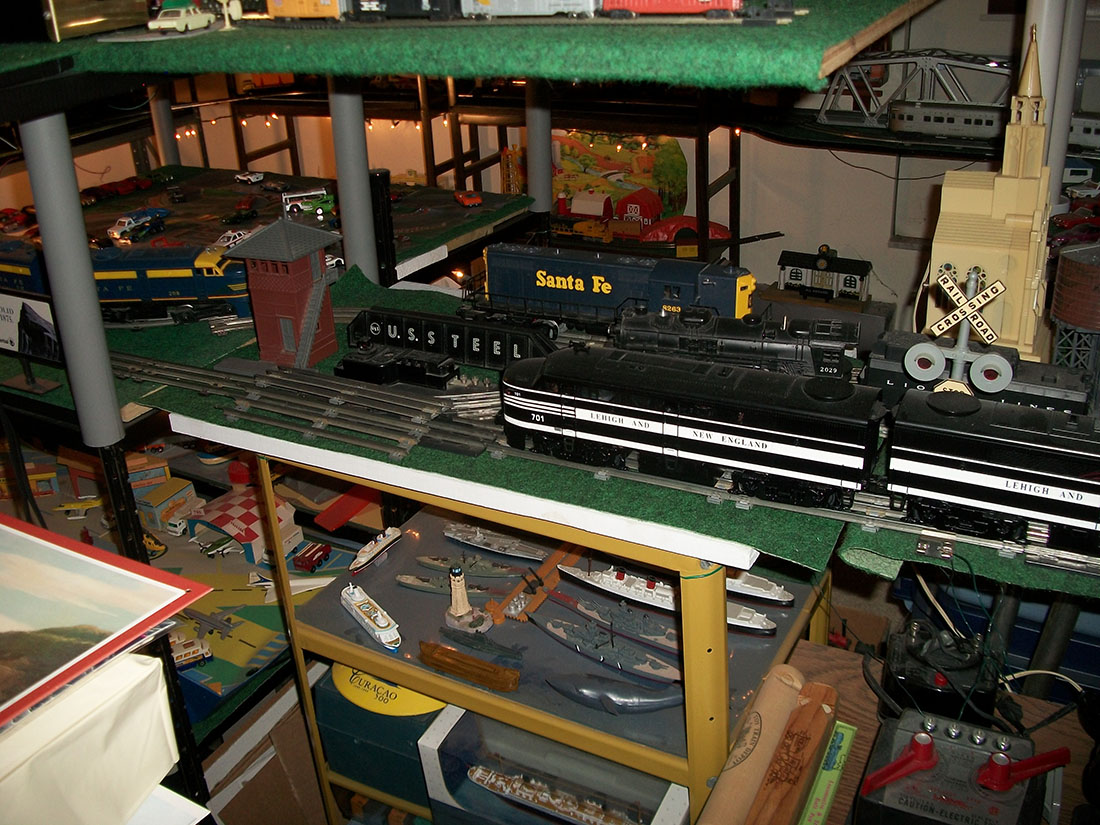
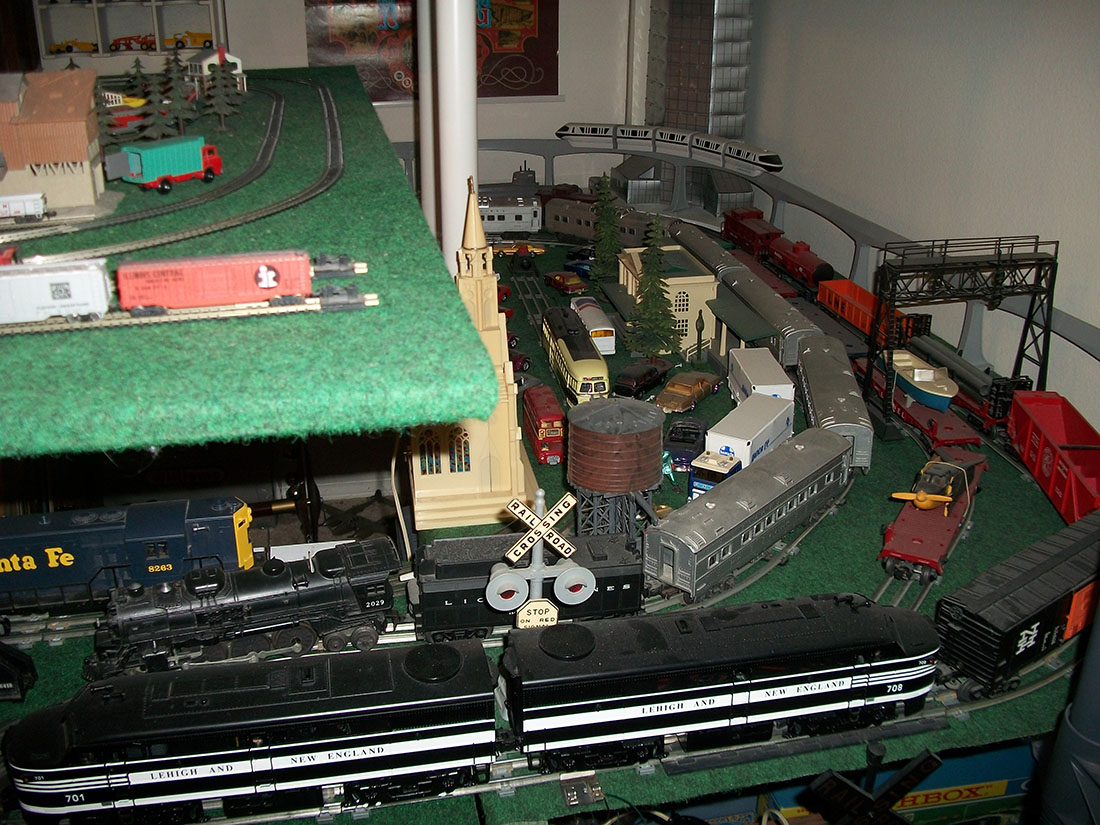
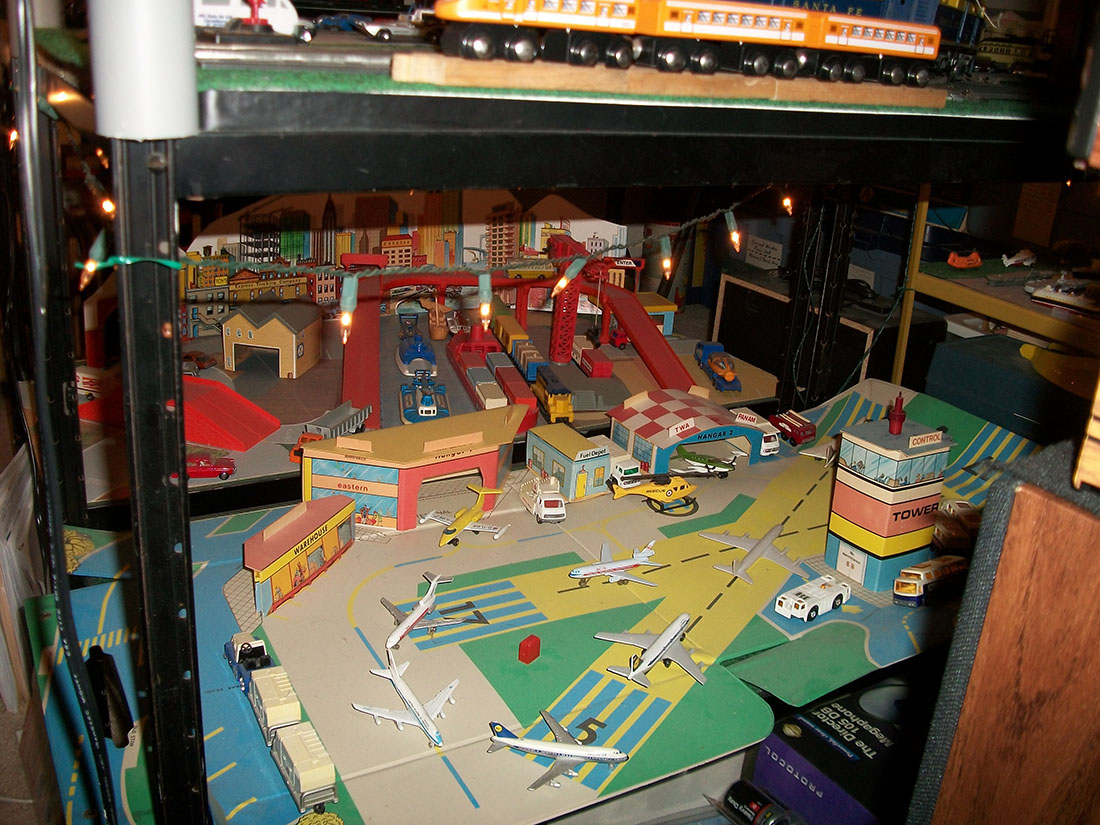

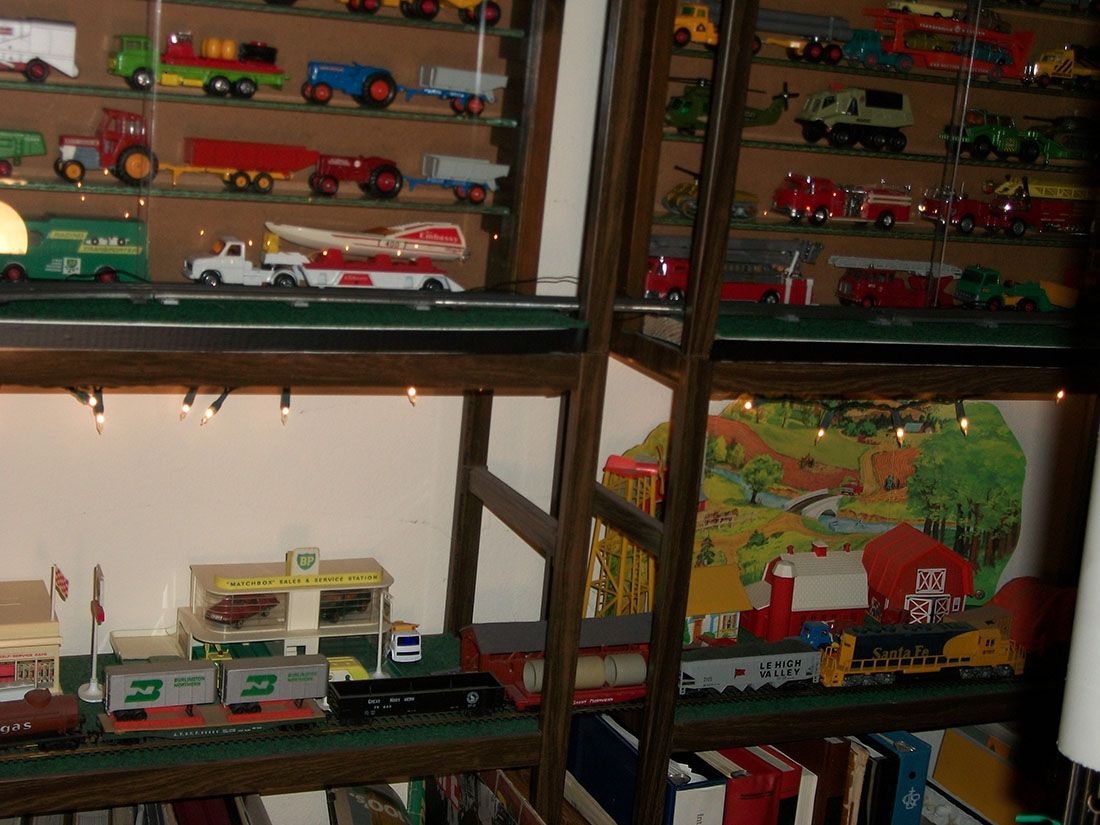
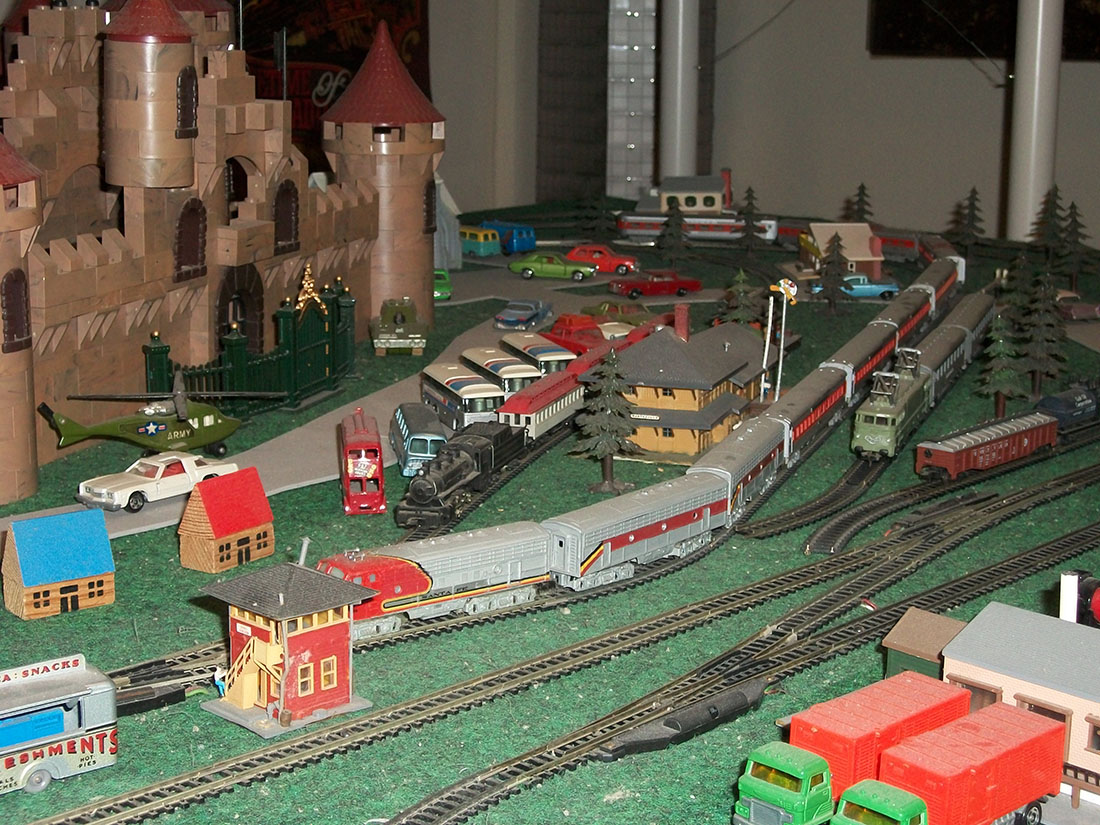

Rob
I so appreciate your thorough description, plan, pictures and even a video so we can be enlightened about your layout. Is the N scale DCC? I suspect all the point motors are underneath and what do you have planned with signals, lights and controls. I know the scenery will be out of this world but I and others need to know how a Famer does the guts of the works.
Dangerous Dave sends us mortals great videos of his and we would not mind seeing more of Farland Howe too just for grins.
Be safe and well
George from LI, NY
Wonderful examples of the range of creativity shown by modelers. Different scales snd different ideas snd all related to the joys of model railroading.
The advice on height is spot in as well. When possible build them high. Access is definitely something that as we age it becomes more challenging. Also higher gives a different view of our layouts snd the worlds we create.
Kool mine is going to look something like that.
Nice. Great work by all and thanks for the tips.
Jim AZ
A couple of thoughts on height:
Think about if you ever may have difficulty standing, if your layout is at about eye level when seated, it may help you enjoy your hobby longer.
To move around and work under the layout, try making a chair on casters, like a mechanics creeper set to a convenient height to reach up to the underside.
Rob, you certainly got plastered. Good tips and good to watch. You might want the conductor to check the sill on the car ahead of the caboose, looks like the car has shifted up. Look forward to a follow up, and by the way, was in Longmont a couple of years ago, and it is still there.
Good advice and great shots from the rest! Thank you, and our sponsor, Mr. Al.
are there any layouts for north conway NH
Nice video Rob, as always. Have the conductor check the sill of the last boxcar ahead of the caboose, as it looks high. Maybe the conductor got plastered as well.haha
Good advice from the other contributors.
Rob, was in Longmont a couple of years ago, and it is still there.
Thanks, Al.
MN Dan
Howdy Rob, I was born and raised in Martins Creek, PA and we were on the eastern end of the Cement Belt. There were over 25 cement plants in Eastern PA. 2 were in Martins Creek. It is a small village and most of the men worked in one of the two mills. They were the Alpha and Lehigh. Both were closed in the mid 60’s. They both were served by the Lehigh & New England and the Alpha plant was also served by the Erie Lackawana and Pennsylvania RR’s. There was a BIG RR yard which I wish I could model. I spent quite a bit of time at Alpha as I had my father and 3 uncles working there. I loved to watch the shovels and dinkeys work the quarry and then the dump cars would go up an incline to the crusher. From there the rocks would go to the kilns then the klinkers would be cooled and then to the finishing mill where they were ground into the fine powder called cement.
Your quarry is almost a picture of the one at home. Great work! All it needs are some well drills on the top. I even got to watch a blast from a distance with my uncle. It was an exciting time in the life of a preteener when there wasn’t much to do in a small town. You got me thinking about starting just the quarry as that was the most exciting part of the mill. I’m 87 now and had trains since 1938 when my uncle Bill gave me an Ives set that he bought in 1918. I’ve played with everything from N to G. I still stick with DC as that’s what all my trains run on except for Lionel and Marx.
Keep letting us see how you are coming along. You brought out a lot of thinking to an old man and I thank you so much for that. Also, in all my years I don’t think that anyone has published anything about the cement industry.
Thanks again and keep up the good work.
Peace, Jim
Hello Rob!
This looks like a larger version of your previous Colorado and Northern(?)
I liked the old west look of that layout. Lots more going on here.
Looking good!!
Hi, James Allen,
I grew up in Pen Argyl, and we drove through Martin’s Creek often on the way to Easton.
Of course, Pen Argyl was a hub for the Lehigh and New England, but unfortunately, I was only 6 or 7 when they took up the tracks. I did take several hikes to visit the abandoned roundhouse and railbeds.
The black and white O gauge engines on my photos above have L & NE markings.
Rob: Great tutorial. Where did you find the ponderosa pine trees? Would love to know as I could use some on my lay out. Thanks to Alastair and all the contributers. Learn lits. John